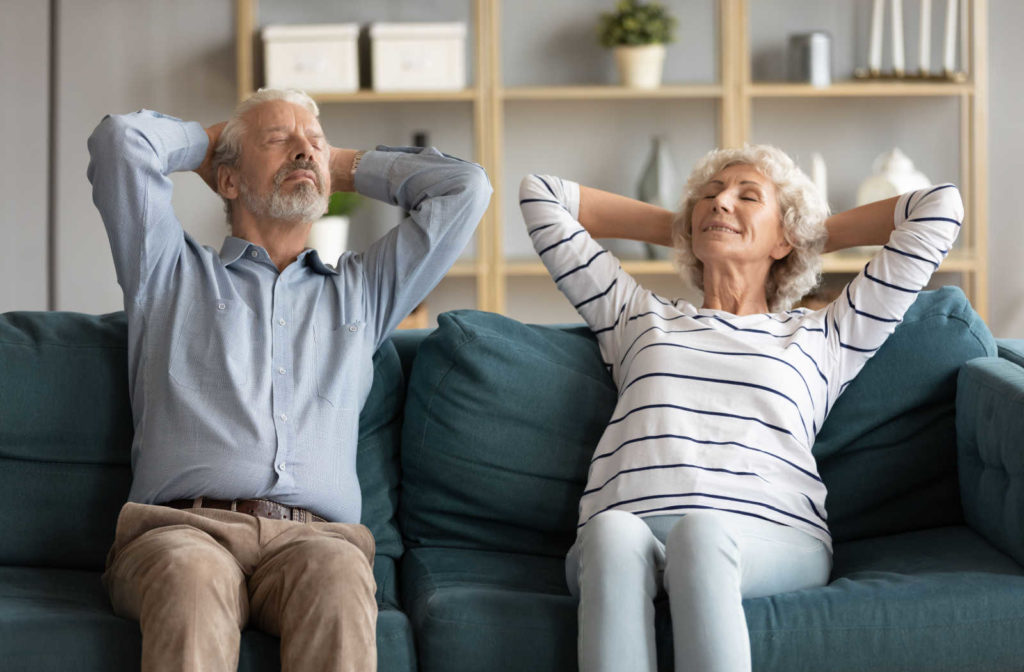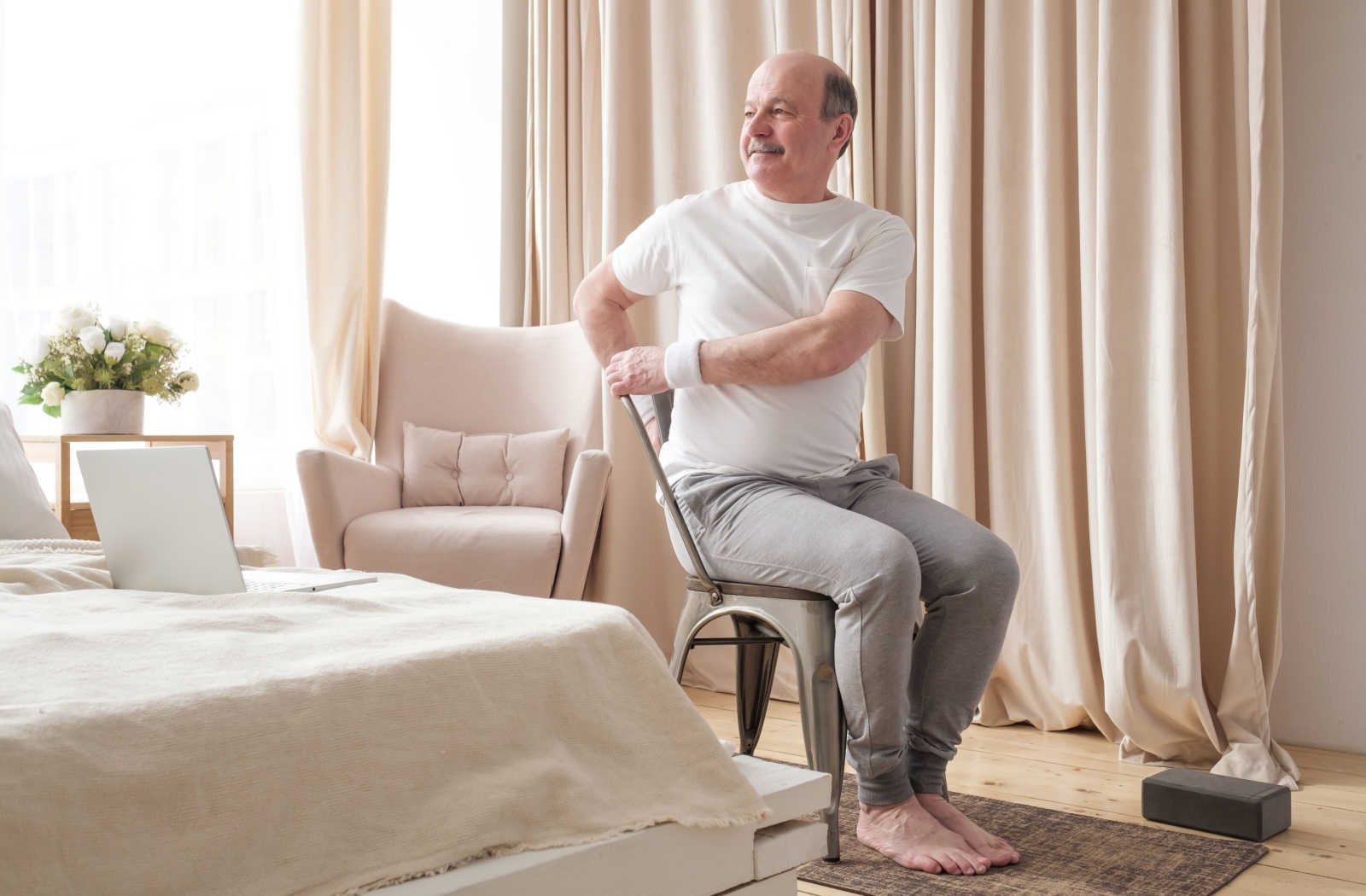Maintaining good posture is important at any age for your overall health and wellness. For seniors, poor posture can lead to aches, pains, and injuries. Your posture can also affect your balance and mobility, which are both essential for seniors leading healthy, independent lives both inside and outside assisted living communities.
Changes to your body are a natural part of the aging process, and this includes losing muscle. After the age of 60, it is natural to experience an increase in the rate of muscle loss. Losing muscle can impact many bodily functions, and that includes your posture.
Performing posture exercises can help you maintain good posture throughout the later years of life. Learning which exercises to do and how to do them are the first steps.
What is Good Posture?
There’s more to good posture than just sitting up straight. In general, good posture means that the body is aligned in a way that distributes your weight evenly across your joints, bones, and muscles.
Good posture means:
- Keeping your spine in a neutral position, with the natural curves of your spine maintained.
- Your shoulders should be relaxed, not hunched or rounded forward.
- Your chest should be open, with your head balanced on top of your spine.
- Your feet should be planted firmly on the ground, with the weight of your body distributed evenly between them.
Maintaining good posture also involves being aware of how you hold your body throughout the day, not just when you are standing or sitting in one position. This means being mindful of your posture when you are walking, lifting, and performing other activities.
Posture Exercises for Seniors
Improving your posture takes time and effort, but it is an important part of maintaining good overall health and reducing your risk of injury. The following 5 senior-friendly posture exercises can help you get started:
Chin Tucks
This exercise can help to promote neck strength and improve posture.
To do a chin tuck:
- Sit up straight in your chair with your shoulders back and your feet planted firmly on the ground.
- Pull your chin and head straight back. Your chin should stay parallel to the floor.
- Relax your chin forward into its neutral position.
- Repeat 10 times.
Shoulder Shrugs
Shoulder shrugs can help alleviate hunched shoulders and strengthen your upper back muscles. This exercise can be done both standing and sitting down.
To do a shoulder shrug:
- Start with your feet planted firmly on the floor in a standing position. Your feet should be about shoulder-width apart. Slightly bend your knees to prevent locking.
- Your arms should hang neutrally at your sides, with your palms facing inwards.
- Raise your shoulders towards your ears and slowly roll your shoulders back.
- Lower your shoulders back down to a neutral position.
- Repeat 10 times.

Chest Stretch
Chest stretches are a great way to help loosen tight chest muscles and avoid injuries.
To do a chest stretch:
- Sit up straight in your chair with your shoulders back and your feet planted firmly on the ground.
- Place your hands behind your head, palms facing inwards. Your hands should be positioned to support the lower part of your head, between your ear and neck.
- Bring your chest out and lift your elbows as far as you can.
- Hold the stretch for 30 seconds.
Seated Row
This exercise will engage several parts of your upper body, including your upper back.
To do a seated row:
- Sit up straight in your chair, with your shoulders back and your feet planted firmly on the ground.
- Extend your arms straight in front of you.
- Pull your elbows back behind you. Keep your arms close to your body and squeeze your shoulder blades at the end of the movement.
- Repeat 10 times.
Wall Tilts
Wall tilts are a great way to engage your lower back and correct your posture.
To do a wall tilt:
- Stand with your back against a wall. Your feet should be shoulder-width apart, and your knees should be slightly bent.
- Place one hand behind your back. Your hand should sit at your lower back, about where your tailbone is.
- Try to flatten your lower back until your hand feels increased pressure.
- Relax into a neutral position and repeat 10 times.
Benefits of Good Posture & Exercise
As we age, our balance and stability can be compromised. Good posture can help seniors maintain balance and reduce the risk of falls. Incorporating these exercises into your daily routine can help improve your posture, balance, and flexibility, and help you avoid joint and muscle pain.
Exercise plays an important role in the health and wellness of seniors. In addition to keeping your body active, exercise can also improve your mood. One study found that just 6 minutes of physical activity can improve the mood of older adults. Not all exercise has to be vigorous. The Centers for Disease Control and Prevention (CDC) recommend that seniors participate in activities that strengthen muscles at least 2 days a week and activities that improve balance 3 days a week.
If you are new to exercise, it is important to start slow and listen to your body. If you experience any pain or discomfort while doing any type of exercise, you should always consult your doctor before continuing.
Discover Optimal Living in Londonderry
The team at All American Assisted Living at Londonderry is committed to senior health and wellness. Our Optimal Living program is a great option for seniors who want to reach their highest health potential. Book a tour today to learn more!



